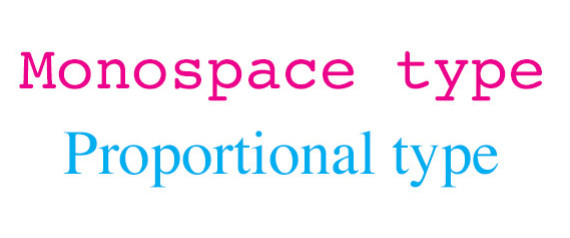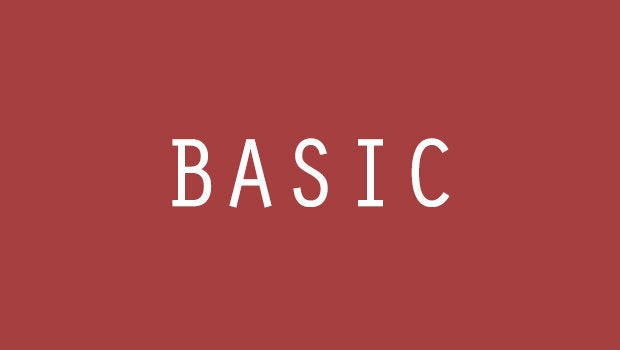
You tap the period key to end a sentence, add a space, and then ... another space? A capital letter? Which is correct? Should we care?
As many language-related arguments go, the answer is complicated. There are scores of people on the Internet arguing passionately for single spacing, others for double. Each person feels that she, of course, is right. "Typing two spaces after a period is totally, completely, utterly, and inarguably wrong," tech writer Farhad Manjoo wrote for Slate in 2011; "I CANNOT BELIEVE THE GALL OF MODERN TYPOGRAPHERS," a blogger responded.
What matters most, though, isn't what happens on blogs or forums, but in classrooms full of impressionable young minds not yet sullied by bad habits. If you want to change something, teach it to kids. Right? Well, according to a very unscientific survey, teachers are about as divided as the Internet.
The Huffington Post asked 23 middle and high school English instructors how they felt about this niche issue. Nine preferred two spaces -- some more strictly than others -- claiming that it makes essays easier to read. A few of these justified their response simply because it is the way they were taught. One, a special needs instructor, believed the extra space could be particularly helpful for kids with trouble reading. On the other hand, five teachers favored one space after a period, mostly because two spaces looks dated. The other eight were fairly neutral, and one actually required both styles in different scenarios: one space for school newspaper articles and two spaces for classroom essays.
According to conventional wisdom, those who were taught to type on typewriters instead of computers learned the double-space rule. Because typewriter fonts were monospaced -- meaning each character took up the same horizontal space -- the resulting abundance of white space between letters on the page would make it harder to tell when a sentence ended. (For a visual, open a Word document and start typing in Courier font.) It's been suggested that single- and double-spacers are divided by age as much as typing ideology.
Among the teachers we surveyed, we did notice the older men and women preferred two spaces to one, but several of the more veteran respondents also stressed that it wasn't a requirement for students.
The issue is complicated further by language guides, which also (surprise!) disagree with one another. The Chicago Manual of Style advocates for one space (even if you're a U.S. Marine). The American Psychological Association recommends two spaces for drafts, and one for published works. The Modern Language Association suggests one space might be a better choice, but two is fine.
Perhaps we could solve this sticky problem with a history lesson: Which convention started first?
Manjoo's essay for Slate whipped language mavens into a frenzy with the idea that everyone was quite happy with single spaces until the goddamn typewriter came along. "[Typographers] who study and design the typewritten word decided long ago that we should use one space, not two, between sentences," he declared. Contemporary typographer Ilene Strizver agrees, as does Matthew Butterick, in his book, Practical Typography.
While typewriters may have encouraged two spaces after a period, the idea that the practice started with those machines is a touchy subject. In fact, it turns out that double spacing likely predated the advent of the typewriter by more than 100 years.

An anonymous blogger wrote up a mic-dropping post countering every argument in Manjoo's post in fine detail. The idea that typewriters ruined spacing "is a fairy tale," it reads, pointing to some 18th century manuscripts that suggest adding a space after punctuation that's wider than the one separating words, and an extra-wide space after sentence-ending punctuation. A logic that blogger Tom Lee considers "mathematical beauty."
Humans are creatures of habit, though, and tend to trust what they learned first. A 2011 poll of Above the Law's professional readership showed 66 percent in favor of double spacing. Megan McArdle of The Atlantic used a typewriter growing up, and we'll have to pry that second space from her cold, dead hands "even if it makes typographers cry." Yikes.

Still, "we've always done it this way" isn't a reason to keep doing anything. (See: Treating illness with bloodsucking leeches.) Strizver and Manjoo also point out that all our shiny new computer fonts use proportional spacing -- meaning there's no excess white space around characters -- thus taking a bite out of the readability defense favored by the double-space club, who are actually used to reading single-spaced writing whether or not they realize it. The vast majority of online publications, including The Huffington Post, use one space after a period.
In the end, though, how much should we care how people space their writing? How much hand-wringing does it deserve? To answer that, we'd like to reiterate Mark Bennett's thoughts in a 2011 blog post on the subject:
"Has anyone ever said, in the entire history of the world, 'This would have been a great book, but because the author used two spaces after a period, it is an unmitigated disaster'[?]"
Probably not.
